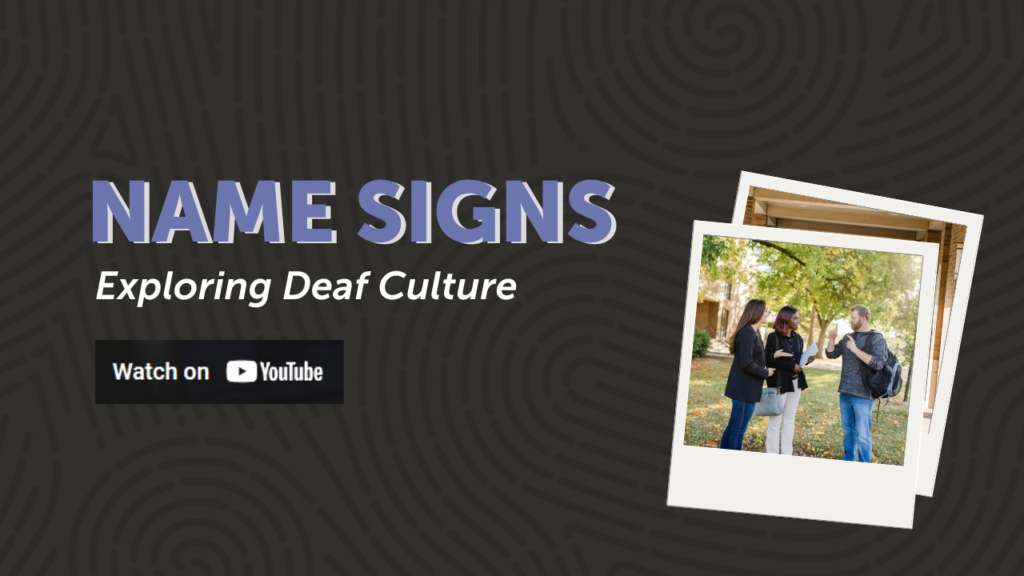Insights
all insightsName Signs: Exploring Deaf Culture

“Your name sign is given to you by somebody else and is partly a description of who you are.”
~ Dylan Heuer
In Deaf culture, name signs are distinct from the names assigned at birth and are often used alongside or in place of written names. They are typically composed of a combination of a handshape and a location on the body or in the signing space.
Name signs are personal and represent both a cultural connection and a sense of belonging and identity within the Deaf community. The creation of a name sign often begins with an understanding of the individual’s personality, characteristics, or notable traits. It might incorporate elements that reflect their appearance, behavior, or even a personal story.
Many of the DSU team members have unique name signs. In this video, Dylan Heuer explains how name signs are given in the Deaf community and learns the name signs of some of his coworkers. Dylan is passionate about helping Deaf individuals explore and embrace their Deaf identities, and this passion comes through in his work with DSU and as director of Iowa Baseball Camp for the Deaf (IBCD).
Learn about name signs, where they come from, see some examples with Dylan around the Deaf Services Unlimited Office!
Q&A
- What are name signs in Deaf culture?
Name signs are unique identifiers used within the Deaf community to refer to individuals without fingerspelling their full names. They often reflect a person’s physical traits, personality, or notable characteristics. - How are name signs assigned?
In Deaf culture, name signs are typically given by members of the Deaf community, not self-assigned. The process involves getting to know the individual, and the name sign is based on mutual agreement and cultural norms. - What do name signs symbolize?
Receiving a name sign signifies belonging and acceptance within the Deaf community. It reflects recognition of one’s identity and integration into Deaf culture. - Are there different types of name signs?
Yes, there are primarily two types: descriptive name signs, which are based on physical traits or characteristics, and initialized name signs, which incorporate the first letter of a person’s name into the sign. - Can hearing individuals have name signs?
Yes, hearing individuals who are active participants in the Deaf community can receive name signs. However, these are typically assigned by Deaf individuals and are not self-chosen.
